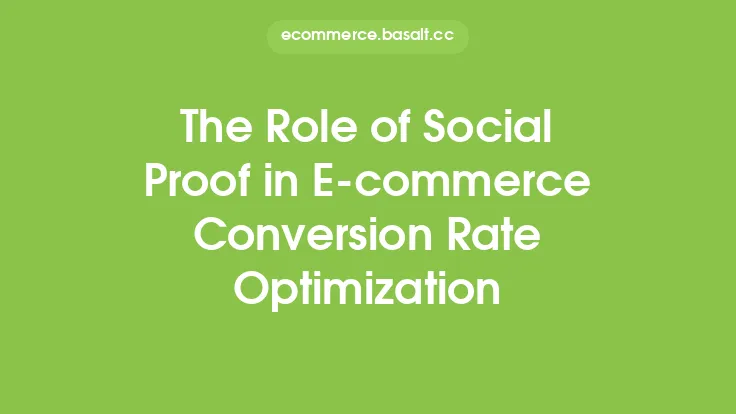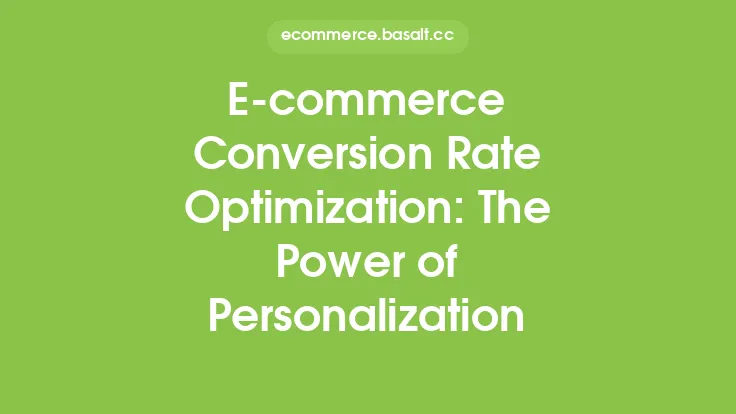Understanding the needs and preferences of customers is crucial for any e-commerce business aiming to increase its conversion rates. One of the most effective ways to gain insights into customer behavior and preferences is by collecting and analyzing customer feedback. Customer feedback provides valuable information about the strengths and weaknesses of an e-commerce website, helping businesses to identify areas that need improvement and implement data-driven conversion rate optimization (CRO) strategies.
The Importance of Customer Feedback in E-commerce
Customer feedback is essential for e-commerce businesses as it helps them understand their target audience better. By collecting feedback, businesses can identify pain points, areas of improvement, and opportunities to enhance the overall customer experience. Customer feedback can be collected through various channels, including surveys, reviews, ratings, and social media. Analyzing customer feedback helps businesses to prioritize their CRO efforts, ensuring that they focus on the most critical issues that affect customer satisfaction and conversion rates.
Types of Customer Feedback
There are several types of customer feedback that e-commerce businesses can collect and analyze. These include:
- Explicit feedback: This type of feedback is intentionally provided by customers, such as through surveys, reviews, and ratings. Explicit feedback is straightforward and easy to analyze, providing clear insights into customer preferences and pain points.
- Implicit feedback: This type of feedback is inferred from customer behavior, such as browsing patterns, search queries, and purchase history. Implicit feedback requires more effort to analyze but can provide valuable insights into customer behavior and preferences.
- Qualitative feedback: This type of feedback is non-numerical and provides detailed, open-ended insights into customer experiences and opinions. Qualitative feedback is often collected through surveys, interviews, and focus groups.
- Quantitative feedback: This type of feedback is numerical and provides statistical insights into customer behavior and preferences. Quantitative feedback is often collected through analytics tools, ratings, and reviews.
Analyzing Customer Feedback
Analyzing customer feedback is a critical step in informing CRO strategies. Businesses can use various tools and techniques to analyze customer feedback, including:
- Text analysis: This involves analyzing customer reviews, ratings, and feedback to identify common themes, sentiment, and preferences.
- Sentiment analysis: This involves analyzing customer feedback to determine the emotional tone and sentiment behind the feedback.
- Cluster analysis: This involves grouping similar customer feedback together to identify patterns and trends.
- Regression analysis: This involves analyzing the relationship between customer feedback and conversion rates to identify areas of improvement.
Implementing CRO Strategies Based on Customer Feedback
Once customer feedback has been collected and analyzed, businesses can implement data-driven CRO strategies to improve the customer experience and increase conversion rates. Some common CRO strategies that can be informed by customer feedback include:
- Streamlining the checkout process: Customer feedback can help businesses identify pain points in the checkout process, such as lengthy forms, lack of payment options, or unclear shipping information.
- Improving product information: Customer feedback can help businesses identify areas where product information is lacking, such as poor product descriptions, low-quality images, or insufficient customer reviews.
- Enhancing site search and navigation: Customer feedback can help businesses identify areas where site search and navigation can be improved, such as slow search results, unclear categorization, or difficult-to-use filters.
- Optimizing mobile experience: Customer feedback can help businesses identify areas where the mobile experience can be improved, such as slow loading times, unresponsive design, or difficult-to-use interfaces.
Measuring the Effectiveness of CRO Strategies
Once CRO strategies have been implemented, businesses need to measure their effectiveness to ensure that they are achieving the desired outcomes. This can be done by tracking key performance indicators (KPIs) such as:
- Conversion rates: The percentage of customers who complete a desired action, such as making a purchase or filling out a form.
- Customer satisfaction: The level of satisfaction customers have with their experience on the website, measured through surveys, reviews, and ratings.
- Average order value: The average amount spent by customers in a single transaction.
- Customer retention: The percentage of customers who return to the website to make repeat purchases.
Conclusion
Customer feedback is a valuable resource for e-commerce businesses looking to inform their CRO strategies. By collecting and analyzing customer feedback, businesses can identify areas of improvement, prioritize their CRO efforts, and implement data-driven strategies to enhance the customer experience and increase conversion rates. By measuring the effectiveness of CRO strategies and continuously collecting and analyzing customer feedback, businesses can ensure that they are always improving and adapting to the changing needs and preferences of their customers.





